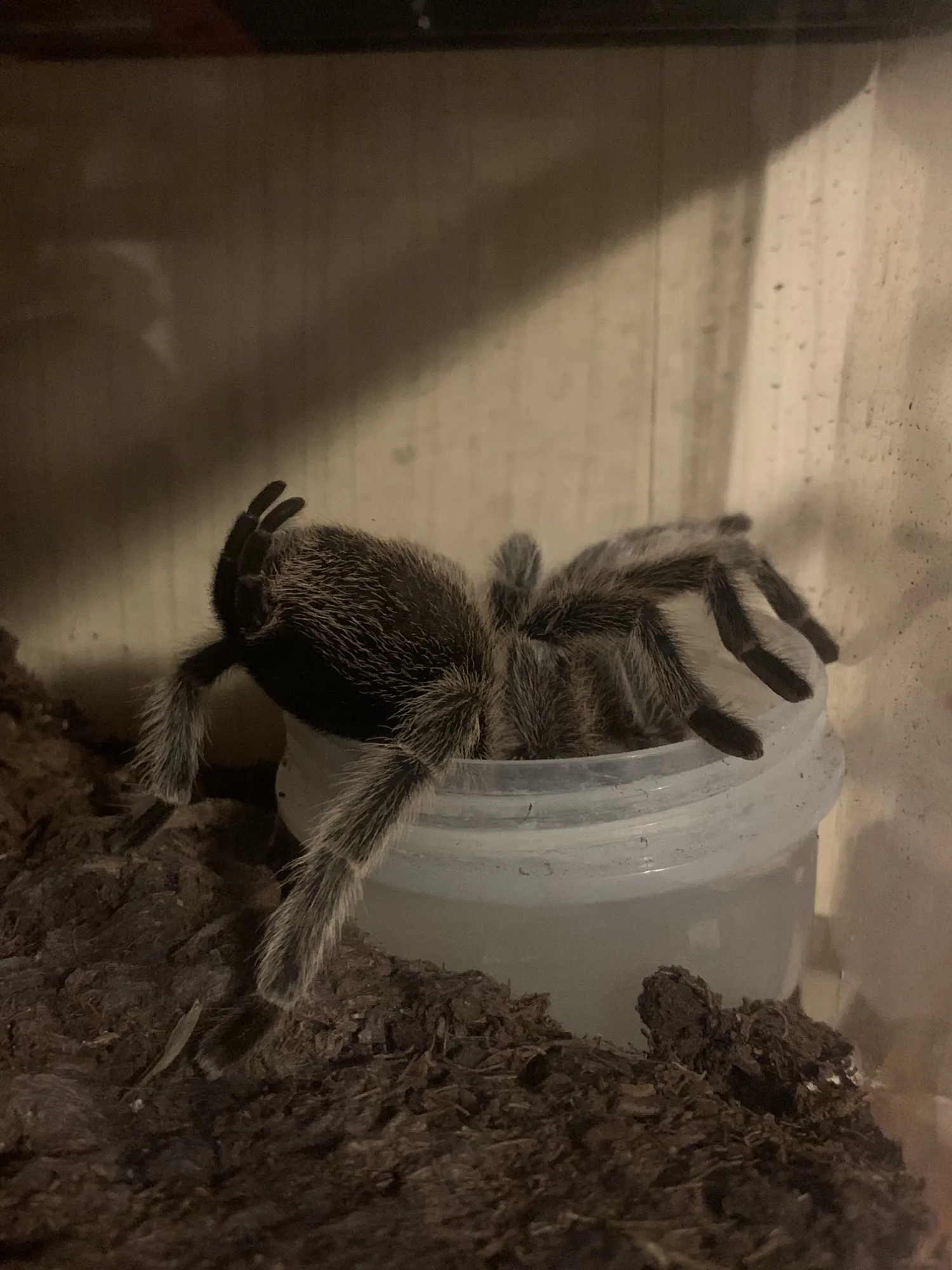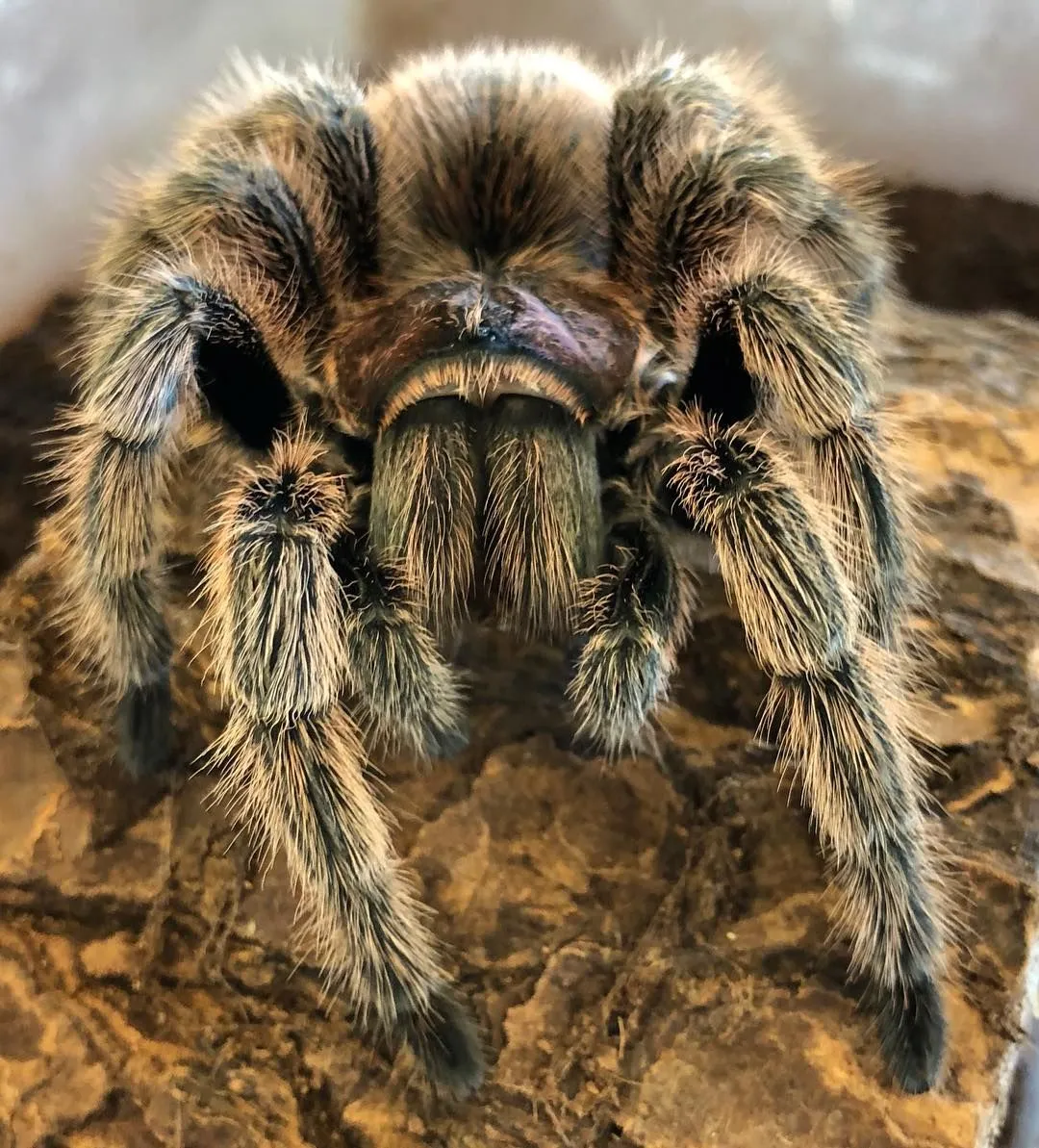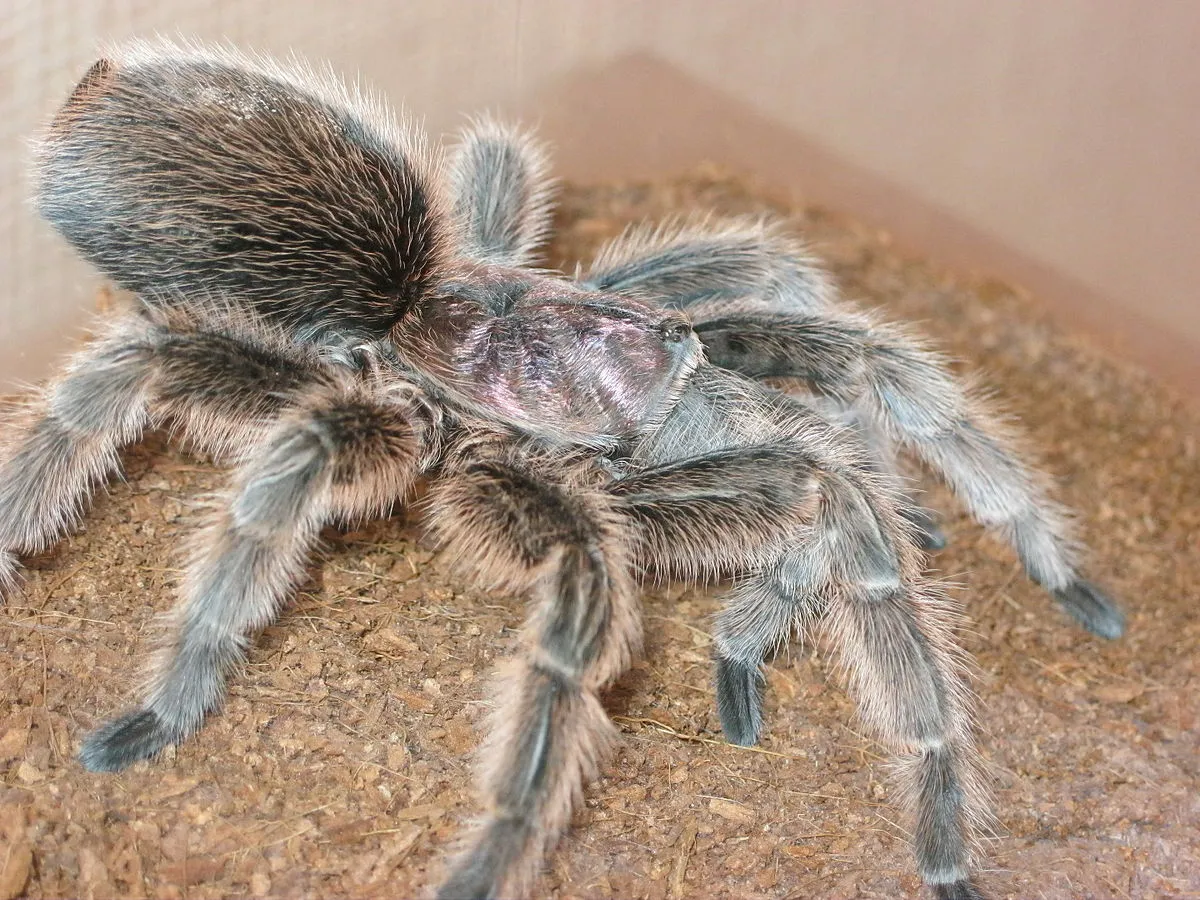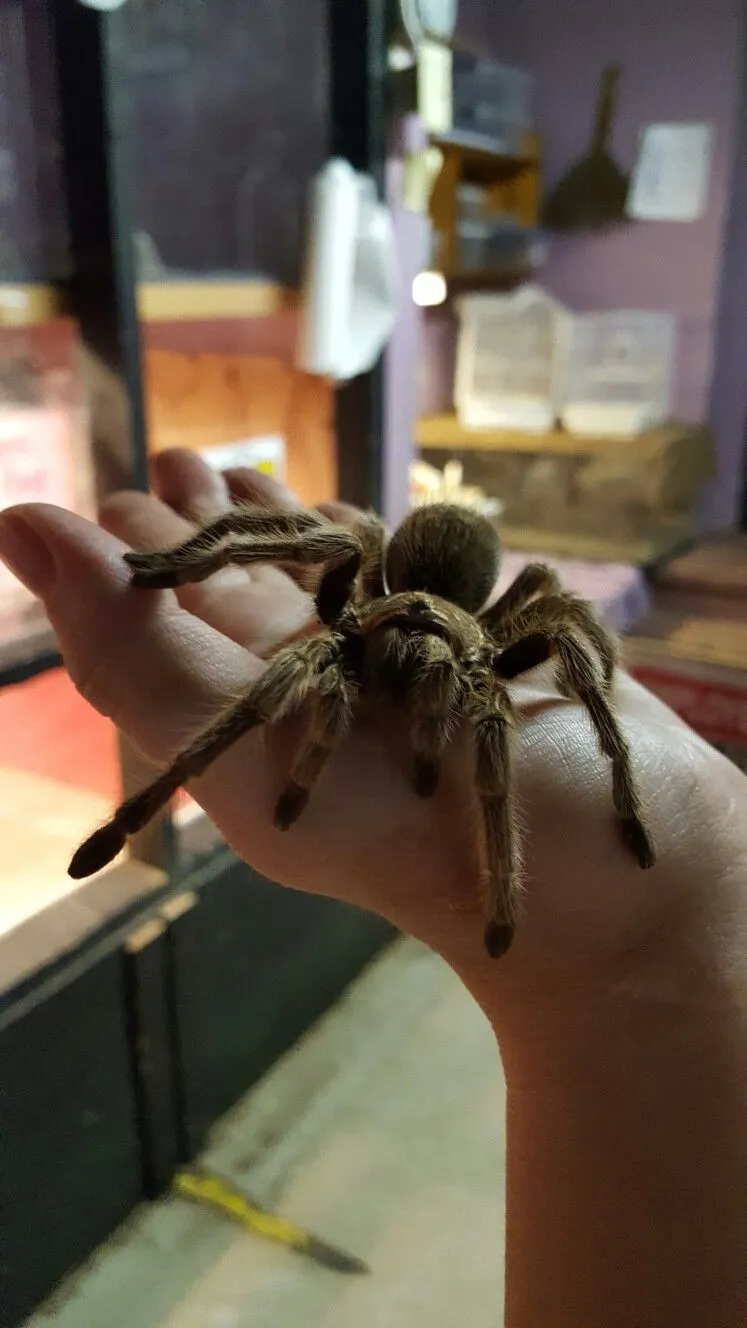Owning a Rose Hair Tarantula can be a rewarding experience, but it can also bring moments of concern. One of the most common worries among tarantula keepers is when their Rose Hair Tarantula refuses to eat. While occasional fasting is normal, a prolonged lack of appetite can be a sign of an underlying issue. Understanding the reasons behind this behavior is crucial for ensuring your tarantula’s health and well-being. This guide delves into the top five reasons why your Rose Hair Tarantula might not be eating, providing actionable advice and insights to help you address the problem and keep your eight-legged friend thriving. Keeping your tarantula happy and healthy is key to a good relationship.
Common Reasons for Rose Hair Tarantula Refusal to Eat
Several factors can contribute to a Rose Hair Tarantula’s reluctance to eat. Often, the reason is a simple environmental or behavioral issue that can be easily resolved. However, it’s essential to rule out more serious health problems. The following are the most common culprits behind a Rose Hair Tarantula’s loss of appetite. Before you panic, take a good look at the environment and the recent events surrounding your tarantula. Many times a quick fix will solve your problem, and your tarantula will be back to eating soon.
Temperature Issues and Their Impact
Temperature plays a crucial role in a Rose Hair Tarantula’s metabolism and feeding behavior. These tarantulas, like many other reptiles and invertebrates, are ectothermic, meaning they rely on external sources to regulate their body temperature. If the temperature is too low, their metabolism slows down, reducing their appetite. Similarly, extremely high temperatures can also stress the tarantula and cause it to refuse food. Maintaining the correct temperature is vital to ensure your tarantula’s well-being and encourage feeding. Make sure the temperature in your house is stable and is not fluctuating too much from the seasons.
Ideal Temperature Range for Rose Hair Tarantulas

The ideal temperature range for a Rose Hair Tarantula is typically between 75-85°F (24-29°C). This range allows them to comfortably digest food and maintain their energy levels. It’s essential to monitor the temperature in your tarantula’s enclosure regularly using a reliable thermometer. The temperature should be consistent, with minimal fluctuations throughout the day and night. Consider the location of the enclosure in your home; avoid placing it near drafts, direct sunlight, or heat sources. A consistent temperature is crucial for your tarantula to feel comfortable and be able to eat. Make sure the temperature is appropriate for the tarantula’s age.
How to Correct Temperature Problems
If the temperature in your tarantula’s enclosure is too low, you can use a heat mat or a ceramic heat emitter connected to a thermostat to provide a consistent source of warmth. Position the heat source on the side of the enclosure, not directly underneath, to create a temperature gradient. If the enclosure is too warm, ensure good ventilation and consider moving it to a cooler location in your home. Avoid direct sunlight, which can quickly overheat the enclosure. Regularly check the temperature with a thermometer to make sure it stays within the correct range. Small adjustments can make a big difference in your tarantula’s appetite and overall health. Make sure that there is a water dish and that it has fresh water available.
Stress and Environmental Factors
Stress can significantly impact a Rose Hair Tarantula’s appetite. These tarantulas are sensitive creatures, and changes in their environment can trigger stress, leading to a refusal to eat. Loud noises, vibrations, frequent handling, or changes in the enclosure can all contribute to stress. Additionally, a lack of suitable hiding places can make your tarantula feel exposed and vulnerable, further exacerbating the problem. Creating a calm, secure environment is essential for promoting healthy eating habits. Make sure your enclosure is in a low-traffic area of your home and that there are not a lot of sudden movements around the enclosure.
Minimizing Stress in Your Tarantula’s Habitat

To minimize stress, provide a secure, stable environment for your Rose Hair Tarantula. Choose an enclosure that’s appropriately sized and includes ample hiding places, such as cork bark, artificial plants, or other decorations where your tarantula can retreat. Keep the enclosure in a quiet area of your home, away from loud noises and vibrations. Handle your tarantula only when necessary and avoid frequent disturbances. Maintain a consistent schedule for feeding and cleaning the enclosure, avoiding sudden changes. By providing a safe, secure habitat, you can significantly reduce stress and encourage your tarantula to eat. Always wash your hands thoroughly before and after handling your tarantula.
Habitat Setup and Its Importance
The setup of your tarantula’s habitat is critical to its well-being. A well-designed enclosure should mimic the tarantula’s natural environment, providing comfort and security. Include a substrate that allows the tarantula to burrow, such as coconut fiber or a mix of peat moss and vermiculite. Provide a water dish with fresh water at all times. The enclosure should be well-ventilated to prevent the buildup of moisture and mold, but avoid drafts that could stress the tarantula. Regularly clean the enclosure to remove any uneaten food and waste. A clean, comfortable habitat is essential for your tarantula to feel safe and secure, promoting a healthy appetite. Use decorations and substrate that are non-toxic.
Molting and Appetite Changes
Molting is a natural process for tarantulas, where they shed their exoskeleton to grow. During this time, their appetite often decreases or disappears completely. Molting can be a stressful process, and your tarantula may not eat for several weeks before and after molting. Understanding the molting process is essential for knowing when to be concerned about your tarantula’s lack of appetite. It is an important part of a tarantula’s life cycle and must be respected. The whole process can take a while depending on the size and age of the tarantula.
Recognizing Pre-Molting Signs

Before molting, Rose Hair Tarantulas often exhibit certain behaviors. These include a loss of appetite, lethargy, and a change in their appearance. You might notice a darkening of the abdomen or a change in the color of the exoskeleton. The tarantula may also become less active and spend more time hiding. It’s crucial to avoid handling your tarantula during this time, as they are particularly vulnerable. Provide a moist, but not wet, substrate to help with the molting process. Leave the tarantula undisturbed until the molt is complete. These are natural behaviors and not always a cause for concern. Make sure your enclosure is clean, but do not disturb the tarantula if it looks like it is about to molt.
Feeding During and After Molting
Do not attempt to feed your tarantula during the molting process. Once the molt is complete, wait a few days before offering food. The tarantula’s new exoskeleton will be soft, and they need time to harden before they can safely eat. Start by offering small prey items, such as freshly killed or pre-killed crickets or mealworms, to ensure the tarantula can handle them. Gradually increase the size and amount of food as the tarantula’s appetite returns. Always remove uneaten food within 24 hours to prevent the growth of mold and mites. Watch for the tarantula’s eating habits, and monitor their growth.
Prey and Feeding Habits
The type of prey you offer and your feeding habits can also influence your Rose Hair Tarantula’s appetite. Providing a varied diet and adjusting the size and frequency of feedings is important for maintaining a healthy eating routine. Offering the right food and ensuring the tarantula is comfortable with eating can solve a lot of issues with your tarantula’s appetite. Sometimes it is as simple as a change in food, or a change in how often you feed your tarantula. Keep in mind the size and age of your tarantula when choosing the prey.
Choosing the Right Prey for Your Tarantula

Rose Hair Tarantulas typically feed on insects, such as crickets, mealworms, and roaches. It’s important to choose prey that is appropriate for your tarantula’s size. The prey should be no larger than the tarantula’s body. Ensure the prey is gut-loaded with nutritious food before offering it to your tarantula. This ensures your tarantula receives essential vitamins and minerals. Avoid feeding your tarantula wild-caught insects, as they may carry parasites or pesticides. It’s better to raise your own or buy insects from a trusted source. Variety in your tarantula’s diet can also improve their appetite. Make sure you provide the right amount of prey, and monitor the feeding habits of your tarantula.
Adjusting Prey Size and Frequency
The frequency of feeding depends on the age and size of your tarantula. Spiderlings typically need to be fed more often, while adult tarantulas can eat less frequently. Offer food once or twice a week to adult Rose Hair Tarantulas. Adjust the feeding schedule based on your tarantula’s appetite. If your tarantula is not eating, you can reduce the feeding frequency and try again in a few days. If they are eating well, you can offer a slightly larger meal or increase the frequency. It’s important to monitor your tarantula’s feeding habits and adjust accordingly. Avoid overfeeding, as this can lead to health problems. Make sure that your tarantula is not being overfed or underfed.
Health Issues and Potential Causes
In some cases, a Rose Hair Tarantula’s lack of appetite may be a sign of an underlying health issue. While these tarantulas are generally hardy, they can still be susceptible to certain illnesses and problems. Recognizing the signs of illness is critical for providing prompt care and ensuring your tarantula’s well-being. If your tarantula continues to refuse food despite addressing environmental and behavioral factors, it’s essential to consider potential health problems. Make sure your tarantula has a good environment and that you have tried the tips listed in this blog post.
Identifying Health Problems

Several signs can indicate that your Rose Hair Tarantula might be sick. These include lethargy, lack of coordination, and unusual posture. Look for any physical abnormalities, such as swelling, discoloration, or lesions. Watch for any discharge or unusual fluids. A tarantula with a serious health problem might also show signs of dehydration or have difficulty moving. If you notice any of these signs, it’s essential to take action promptly. Isolate the tarantula from other tarantulas if you have multiple. Quarantine any new tarantulas to prevent spreading any illnesses to your other pets. Contact a veterinarian or an expert in the field.
When to Seek Veterinary Assistance
If your Rose Hair Tarantula consistently refuses to eat, exhibits signs of illness, or displays any unusual behavior, it’s best to seek professional help. Consult a veterinarian experienced in exotic animals or a tarantula specialist. They can properly diagnose the problem and recommend the appropriate treatment. Provide the vet with information about your tarantula’s environment, feeding habits, and any symptoms you’ve observed. Early intervention is key to successful treatment. Do not attempt to self-treat your tarantula without professional advice. Remember, the well-being of your Rose Hair Tarantula depends on your proactive care and attention.
In conclusion, a Rose Hair Tarantula’s refusal to eat can stem from various factors, ranging from environmental issues to underlying health problems. By addressing the common causes, such as temperature, stress, molting, and diet, you can often resolve the issue and get your tarantula back to eating. Remember to provide a comfortable environment, monitor your tarantula’s behavior, and seek professional help if needed. With proper care and attention, you can ensure your Rose Hair Tarantula thrives and enjoys a long, healthy life. Enjoy the journey of owning a tarantula and remember that your Rose Hair Tarantula is a unique pet with unique needs!
